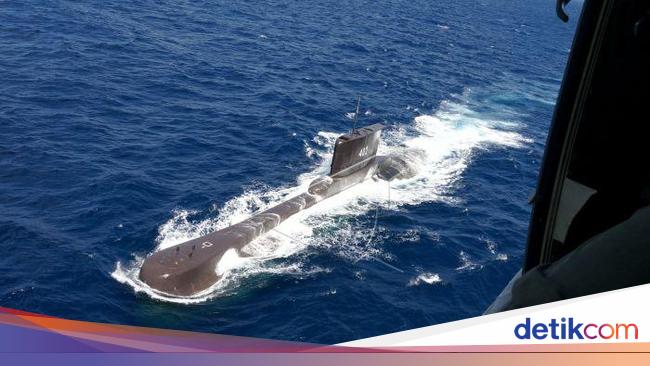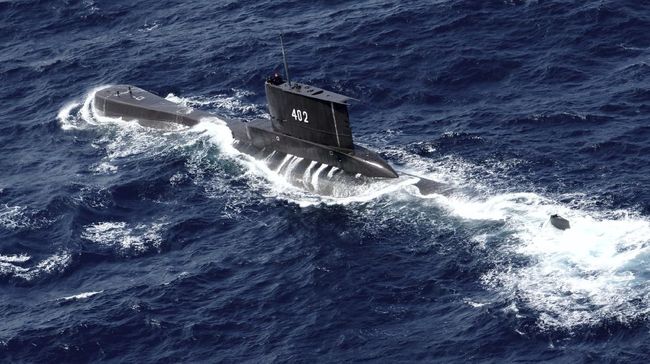Having a sensible conversation on the TNI AL’s shortcomings — Part 3
5. Fanboys talk about naval war. Professionals talk about presence and naval domain awareness to make best use of limited assets—often in collaboration with more capable navies, like the RAN, the JMSDF and the USN — I wish that the TNI AL can be the best that it can be on a limited budget — rather than talk of a grand vision without the ability to execute its planned buy plans (to replace obsolete vessels), and to raise, train, maintain or sustain its new vessels.
(i) In the near future, the maintaining a 24/7, 365 day, a year presence in the South China Sea, through the acquisition of new vessels will serious matter for any naval planner operating in these waters.
(ii) The ability to support a rapid turnaround of high-end naval combatants in support of national requirements—in this case, enforcement of Chinese maritime claims—is an indication that the PLA(N) surface force is increasingly ready to conduct operations (see this 2017 article on:
China's Evolving Surface Fleet). That force will continue to be challenged by the level of maintenance its complex new systems require, as well as by the logistics demands imposed by increasing operations in distant seas. These are, however, challenges that the PLA(N) will address.
6. It is clear that in lesser forums, unfair and illogical criticism of the TNI AL proliferate but here in DT, we try to have a sense of balance — supportive of real Indonesian efforts at naval capability development while being critical of valid short comings in Jokowi's first term plans and the TNI AL’s current fleet design.
It is their job to scrutinize the government spending. It's only a shame that sometimes, they scrutinize them by talking out of their ass. I can only hope that they conduct a thorough investigation so that the actual planner and expert can refute his dumb claims with facts.
7. Of the 7 Summits, the tallest peak on each continent, Mount Aconcagua in Argentina is considered a straight-forward mountain to climb. Aspirants do not need any specialized technical skills. Reaching the top is a matter of putting one foot in front of the other, yet many fail to reach the summit. Just as the erosion of Argentine naval capabilities has impacted upon the regional balance of power in 2021; the erosion of the TNI AL’s naval capacities and its regional standing with other ASEAN navies due to piss poor and illogical planning, under Jokowi's sevond term, will affect the balance of power in the South China Sea in the 2026 to 2030 period.
8. The loss of the USS Thresher led to a sea change in the USN submarine force. After the sinking, the service instituted SUBSAFE, a program that ensures the safe operation of submarines. SUBSAFE monitors the design and construction of new submarines to ensure that boats can remain watertight and survive accidents at sea. Like the Argentinian Navy, the TNI AL needs to learn from their recent loss of a submarine — to make sure that the unlikely event of needing a submarine rescue capability is planned for and properly resourced, up front.
(i) The insidious threats of harsh weather and a lack of oxygen are the real barriers to climbing Mount Aconcagua, in Argentina. Pretentious climbers unacclimated to high-altitude and outfitted with unsuitable gear are practically guaranteed to fail to reach the summit of Mount Aconcagua.
(ii) Just as the Mount Aconcagua has no physical impediments blocking access to the peak, building an ASW capability and a submarine rescue capability for the TNI AL just takes determination and proper allocation a navy’s of priorities — putting the safety of their sailors first — to spend enough to maintain existing submarines and upgrade them at the right time (to extend the lifespan).
9. As leader of ASEAN and a G20 member, Indonesia talks about a vision for a Global Maritime Fulcrum. To support this grand vision, the MEF plans on acquiring a total of 12 submarines (and building them locally), and a significant number of frigates, capable of ASW, which is a pretentious naval power goal. In contrast:
(i) Singapore’s unpretentious and limited goal is to buy and maintain a submarine fleet of 4, with numbers rising only during a transition from a older type with its replacement — there is no intention to develop a local submarine building capability.
(ii) For ASW, the towed arrays on Singapore’s 6 frigates are the 2nd line of defence against enemy submarines, with the 1st line provided by Singapore’s 5 Fokker 50 MPAs and 4 submarines. The 3rd line of defence, against enemy submarines, is provided by 8 Seahawks.
(iii) According to Dr J B Lakeman and Dr D J Browning, The Role of Fuel Cells in the Supply of Silent Power for Operations in Littoral Waters, (Gosport: 2004), in page 47-3, of the four AIP systems, fuel cells are the most efficient in oxygen consumption, consuming approximately 0.4 kilograms of oxygen per kilowatt hour (kgO2/kWh), compared to ~0.75 kgO2/kWh for the Closed cycle diesel, ~0.95 kgO2/kWh for the Stirling system, and ~1.1 kgO2/kWh for the MESMA system. The MESMA has a relatively small customer base having only been retrofitted into Pakistani submarines. In setting limited technological advancement goals, the Singapore Navy finds enough money to operate a 4 Type 218SGs, that use fuel cells and move away from the Stirling system.
(iv) Singapore is also able to constantly sustain its long term ship building plan, with the completion of 8 LMVs. To adapt to change, due to Malaysian hostility, the Singapore Navy re-introduced 4 Sentinel-class vessels (as a short term adaptation before mid or longer term plans can kick-in).
10.There are 3Qns the TNI AL needs to answer:
Q1: Why can’t the TNI AL do the logical and reasonable in the medium (2021 to 2025) to long term plans (2026 to 2030)? This includes acquiring a submarine rescue capability by 2030, before getting talking about building more capable submarines.
Q2: What type of frigate does the TNI AL really need to acquire a respectable ASW task group capability?
Q3: What are the minimum build plan numbers needed for TNI AL frigates, to maintain a constant presence during a troubled peace?
11. Creating an ASW task group, is a true naval team sport, where Blue team MPAs, work with 3 to 4 ship borne helicopters, a submarine and fleet of ships with towed arrays to chase and kill an enemy submarine. The TNI AL needs to start build plans for 6 to 8 of a class of vessel and stop trying to build 2 or 3s. Pleased to see Japan proposing to the TNI AL a sale of four new Mogami-class frigates to Indonesia, and a follow-on plan to build four more in Indonesia along with financing for the proposed 8 frigate acquisition program. A high degree of automation allows the Mogami-class frigate to be operated by a crew of just 90 personnel, a drastic reduction from its predecessor the Asagiri-class destroyer which has a complement of 220. The MHI designed frigate also has a CIC with a unique circular arrangement and open-bridge concept. It features 18 multi-function displays and 2 tactical tables and overhead screens that can project 360 degree augmented reality views of the ship.
12. If the TNI AL’s vessels and boats are sinking during peace time (with no help from the enemy submarines), what is going to happen to TNI AL vessels and boats when the PLA(N), apply a little pressure over 365 days a year, in the early 2030s? Having a less pretentious naval power goal can work too. Just maintain your vessels well and invest in a systems of systems approach to integrating platforms is better than grand visions without substance.








